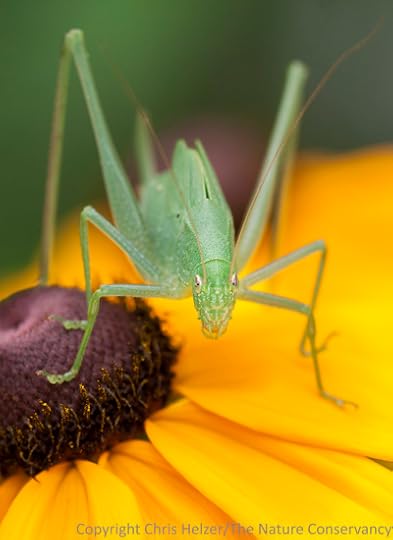Never Mind Biodiversity. Think Color, Movement, Noise
This is a nice description by Chris Helzer, a Nebraska ecologist, about the aftermath of a tour he was giving of some of the prairie habitat he manages for the Nature Conservancy:
As we were finishing the last tour of our site and walking back to the vehicles, Wayne Copp, of the Tall Grass Bison Ranch in Auburn, Kansas, caught up with me. He told me how much he had enjoyed the tours and that he thought our prairies looked great. I thanked him, of course – it’s always nice to hear that. But then he went on…
“A lot of prairies I visit,” he said, “look pretty dead – there’s not much going on. But your prairies are really alive, and they’ve got the three things I always look for in grasslands.”
“Which are?” I asked.
“Color, movement and noise.”
And there you go. I’ve not heard a more concise, all-encompassing description of a good prairie. Even better, you don’t have to be a botanist or ecologist to recognize color, movement and noise. Anyone, regardless of age or background, can walk through a prairie and judge whether or not that prairie has those qualities.
Of course, some of you are already asking, “How MUCH color, movement and noise should there be?”
But Wayne’s criteria for judging prairies (at least as I understand them) are not meant to be quantitative. Sure, more is better, but that’s not really the point. I think he’s just saying
that a prairie without color, movement and noise is deficient. Clean and simple.
Sure, we still need other indicators and measures that can help us identify trends in plant diversity or species’ population viability. We still need to figure out what to look for as we evaluate past management actions and plan the next ones. And we still need to better understand what factors can indicate whether a prairie is ecologically resilient.
Unfortunately, only those of us who spend the majority of our time working in prairies can get much good out of those highfalutin indicators, measures, and factors. They are important, but only to a small subset of people. For everyone else – and us prairie wonks too – Wayne has already figured out the three essential qualities every prairie should have.
Color, movement and noise.
Brilliant.










